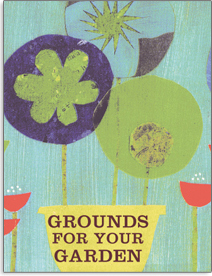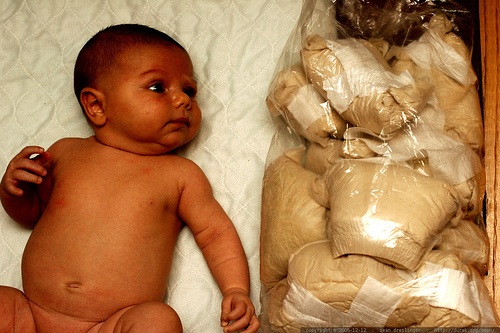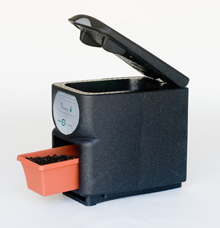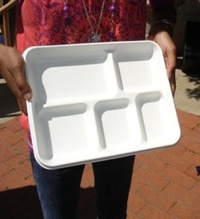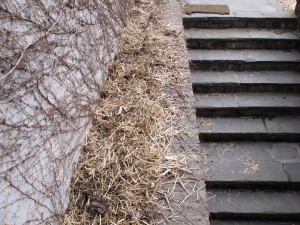A few days ago I wrote about eating at Blue Hill Restaurant for my anniversary. I didn’t go into the food in depth, so I want to say again that it was absolutely delicious. They used fresh, local ingredients that really stood out with their superior flavor. One course was a medley of vegetables and fruit and we found ourselves picking each piece and tasting it individually and then talking about what we had just sampled. The combination of superior cooking and local ingredients made the meal memorable.
We had a very nice waiter who was able to answer a lot of our questions about what farms supply them, etc. They partner with two farms in particular. Stone Barns Center for Food and Agriculture, and Blue Hill Farm in the Berkshires. Wait, did someone say the Berkshires?? It turns out that Blue Hill Farm, which was Dan Barber’s (the chef at Blue Hill restaurant) grandmother’s farm, is very close to Neil’s parent’s house. We decided that the next time we went up, we would try and track the farm down.
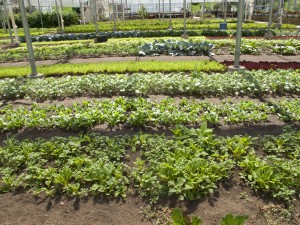
In the meantime, we decided to go to Stone Barns Center for Food and Agriculture the day after our fabulous meal. We packed Lindsay up after her sleepover and drove up to Tarrytown, NY. Stone Barns is set on 80 acres of gardens, pastures and woods. The mission of Stone Barns, as they say, is to celebrate, teach and advance community-based food production and enjoyment, from farm to classroom to table. We had fun in their impressive greenhouse finding some of the items in our meal from the night before. The different beds made a patchwork quilt effect.
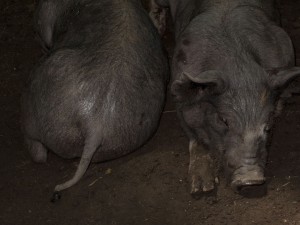
We wandered through the fields and woods to see their animals. The animals were kept in very spacious areas, and you could see that they move them around to different pastures often. They used portable electric fences that were powered car batteries. There were quite a few pigs that were in the woodsy area doing the things that pigs love best; sunning themselves, sleeping and rolling in the mud. The word transparency kept coming to mind. This operation was beautiful, productive and offered the animals a very nice life. I guess it’s weird to say they have a nice life when they are meat animals, but it is on the complete opposite end of the spectrum from feedlots.
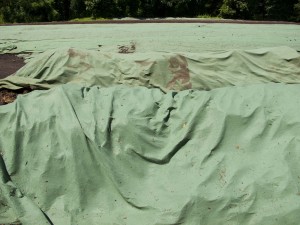
They even have a big composting area. They compost everything from the farm and the on-site restaurant. There were machines that looked as though they chop everything up into smallish pieces and then lay them out into windrows (long piles of compost). The windrows were covered to keep in the moisture. I read that they were interested inharnessing the heat that the compost produced as a way to heat the greenhouse in the winter, and worked to implement a compost heating system. I love this place!!
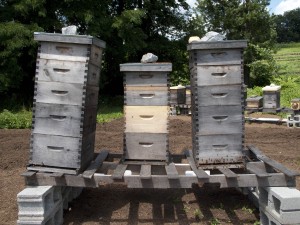
It felt as though we were walking through a botanic garden as we toured the grounds. After we passed the laying hens out in their enormous field, we came across their bee hives. I am fascinated with honey bees right now, and have a friend who keeps bees in Brooklyn and sells her honey. I’m still too chicken to make the leap into beekeeping!
I’ve always been curious to try hunting for wild honey. That entails watching the direction bees fly from the flowers they are pollinating and triangulating the path back to their hives, which are often in a hollow tree. I don’t have much opportunity to do that in NYC and I haven’t found a cohort. Plus I think you need to destroy the hive to harvest the honey and I wouldn’t want to do that. Can you imagine thousands of really pissed off bees with no home? Okay, so I like the idea of hunting honey, but not the reality. So when I saw bees (or possibly wasps) flying into a tree during our walk I was really excited. That could be my elusive honey tree!!
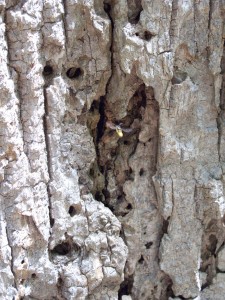
At the end of our visit, we had a snack in their little café and peeked into the Blue Hill restaurant up there. It was a fun escape from the city on a gorgeous summer day.

